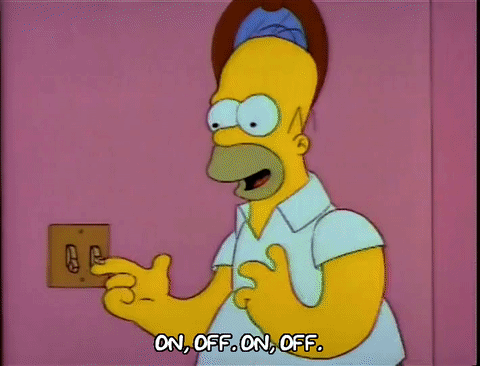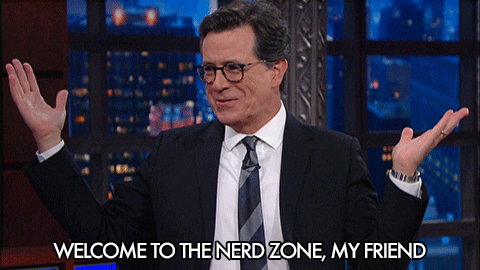Power bills. They’re about as popular as ants at a picnic.
For a lot of us, when a bill appears in our letterbox, we just pay it and put it out of our mind again until the next one shows up.
But have you ever stopped and looked at what you’re actually paying for? Better yet, have you ever tried to compare what you’re paying for against what other energy providers are offering?
If you’ve answered “no” to both of these questions, then keep reading, sit back and prepare to be enlightened!
-
The price of turning on a lightbulb ain’t what it used to be
If you feel like your energy costs seem to go a little higher with every bill you pay, don’t worry, you’re not going crazy.
Residential energy prices have surged 63% in the last 10 years, which is bad enough, but the real problem is that energy costs now take up 26% more of the average Australian household budget than they did in 2010.
But it isn’t all bad news. There are things about the energy industry boom that you can use to your advantage (if you know what you’re doing).
For instance, in the last ten years the number of registered residential energy companies in Australia has almost doubled, going from 19 to 37 – and they all want your business!
More competition means better deals. Search around for who has the best rates and discounts and start talking to them today.
It’s actually a lot easier to switch your energy plan than most people think. Once you get started, your new provider will do pretty much all of the work for you and that includes ending your relationship with your current provider (just like getting your best-friend to break-up with someone for you in grade 4).
-
How to be smarter about energy
In the average Aussie household, heating and cooling accounts for a whopping 40% of total energy use. 40 cents of every dollar you pay!
Now, we could give you the usual tips here about ‘rugging-up’ instead of turning on the heater (brilliant, right? If you’re cold, just put a jumper on!) but instead we thought we’d give you a few tips on how to make some more permanent climate control changes in your home.
First things first: there’s no point warming or cooling your home if all that lovely air-conditioned goodness is going to escape through every nook and cranny it can find. Insulation and draft-proofing ensures that every cent you spend will stay within the walls of your home.
Another option to look into is a split system air-conditioning, which is by far the most cost-effective option. If you live in a rental property this might seem out of your reach, but if you’re a long term renter, it’s still worth raising with your landlord. However, if your only option is using a plug-in heater, make sure you buy the right size to heat your space for the most energy and cost efficient results.
-
It’s a lot easier being green these days
Fun fact: before 2010 the average solar panel took more energy to build than the amount of energy it could produce in its lifespan. Not the greatest tagline for sustainability.
But in 2018 that kind of technology is already considered a thing of the past. The amount of research and incentives that have gone into green power means that now the average time it takes for a solar system to pay for itself in Australia is under 6 years.

And, as a little added sweetener, if you install a solar system on your roof, there may be times of the year where you generate more solar power than you need. In most cases, this energy will be fed back into the grid, giving you an energy ‘credit’ on your next bill!
-
Learning the jargon isn’t fun but it will help you get the best deal
There are a lot of numbers on your electricity bill, but the only one most of us bother looking at is the big one which tells us how much we have to pay.
Well, we’re here to tell you that digging a little deeper can go a long way to helping you figure out how to save. To start with, it is important to know that not all energy plans are set up the same. You could be charged in the following way:
- A flat rate at all times.
- A multi-flat or block tariff which involves pricing that decreases the more power you use.
- A flexible or time-of-use tariff which is billing that involves different pricing based on when you use your power.
Depending on what your household’s energy use looks like, the type of rate you pay could have a real impact on that big number on your final bill.
But if that wasn’t already boring and confusing enough for you, there are also two separate types of charges involved with any power plan:
- Set daily supply charge – covers connection to and the use of the electricity network
- Usage charge – changes based on how much power you use
When you are looking at changing suppliers and evaluating their prices, make sure they apply their discounts to both charges and that the discounts are offered on an ongoing basis.
-
‘Vampire power’ can suck your bank balance dry
No, we’re not talking about their super fast speed, glistening skin or immortal life span… “Vampire power” is a name for the energy used by devices in your home while they plugged into the wall but are not being used.
Advances in technology mean most modern devices use less power on standby but ‘vampire power’ still accounts for 5.9% of residential power use in Australia. This is because more things in our homes use power in ‘standby mode’ than ever before.
Game consoles are big offenders as they automatically download content and do constant Wifi checks. Home entertainment systems and computers can also be expensive because they aren’t ever just one device but a combination of screens, set-top boxes, hard-drives and more.
Rounding off the ‘worst-of’ list are dishwashers and washing machines, which often sit in standby after a cycle, and your Wifi modem, which is technically ‘in use’ 24/7.
By knowing what your most demanding devices are, you can switch them off at the wall when they’re not in use and avoid the dreaded power bill suck of ‘vampire power’. Check out more vampire devices and how much they could be costing you here.
-
Shooting for the stars can save you a bundle
When it comes to buying new appliances for your home it can be tempting to go for a cheaper model to save a few hundred bucks.
But if you’re thinking long-term, the energy efficiency rating is pretty important to consider.
You’re probably already familiar with the Australian government’s Energy Rating star-system that you see on appliances like air-conditioners and washing-machines. But do you really know what those ratings mean for your power bill?
The standard ratings run from one to six stars, with certain models allowed a ‘Super Efficiency Rating’ that goes up to ten. When it comes to their impact on your energy costs, the different ratings are worlds apart. A one-star fridge will cost you over $1,500 more to run than a similar sized six-star model over the course of a decade and if you can find a ten-star model the difference is around $1,850!
Have you noticed your electricity bill rising over the last few years? Share your story with us in the comments below.
You should read this bit: Sometimes we use links in our blogs that belong to a variety of websites and not Nimble, so clicking on, and using them, will take you away from Nimble’s website, meaning we’ve got no control or responsibility over the content. Nimble does not endorse and is not affiliated or associated in any way whatsoever to the businesses named in our blog posts. The information in our blog posts is general information only and does not take into account your objectives, financial situation or needs. The information contained in this blog is correct at the date of publication.
Popular Posts

12 Ways to Make Money Without Having a Traditional Job
August 19, 2019

The complete home maintenance budget guide and how a home renovation loan could help
April 30, 2019

Our Before-and-After Photo Competition
December 14, 2021

Budget Planning for Students: The University Student Budgeting Guide
June 5, 2019



